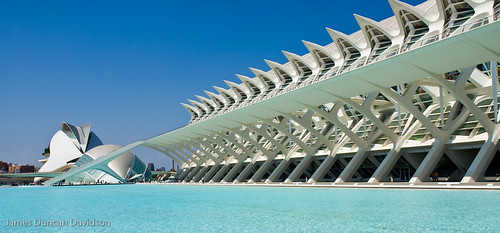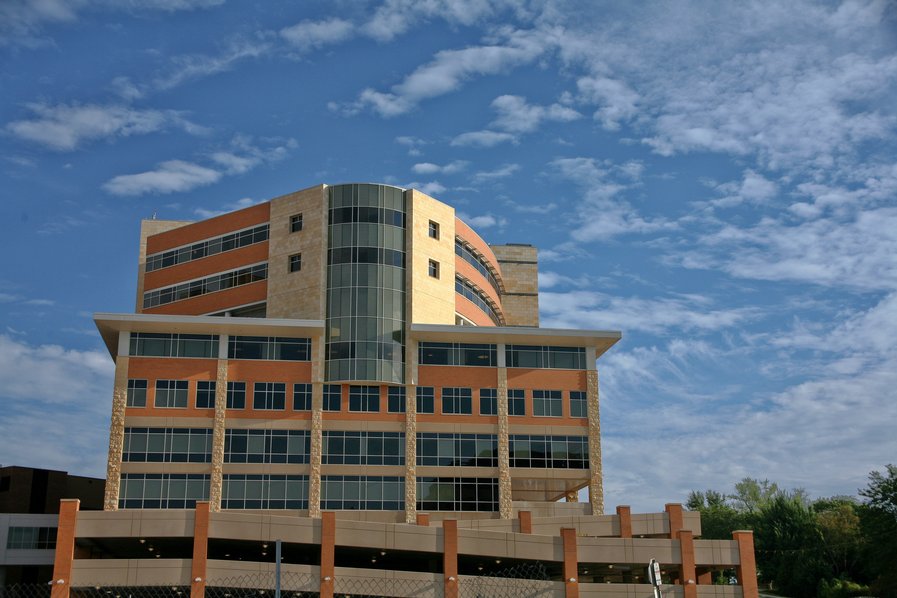The trade magazine VMSD (for visual merchandising and store design) reports on a trend I noticed first in a couple of Dallas 7-Elevens. Under competitive pressure, convenience stores are getting aesthetic overhauls.
Category: Architecture
Ciudad de las Artes y las Ciencias

James Duncan Davidson. Calatrava
American Family Children’s Hospital Grand Opening Photos
Rory Stewart in Kabul
Stewart, who now heads a nongovernmental organization called the Turquoise Mountain Foundation (TMF), had come into Aziz’s good graces by way of his ongoing efforts to save the Old City from imminent destruction. One could be forgiven for assuming that, in Afghanistan, such a threat might be related to Taliban missiles or suicide bombers. But in counterintuitive fact, the culprit is a real estate boom. Everywhere in Kabul, bulldozers are flattening whole city blocks of traditional Afghan mud architecture to make room for modern glass-and-concrete buildings, fueled by billions of dollars in aid money and opium profits.
Stewart and I had spent the morning slogging through the mucky, trash-strewn lanes of the Old City, specifically a quarter called Murad Khane on the north bank of the Kabul River. Initially I had a hard time appreciating exactly what it is that’s worth saving. Murad Khane is a warren of boxy, flat-topped, one- and two-story mud buildings laced with winding passageways so packed with decades of uncollected garbage that street levels had risen seven feet (two meters) in some areas, forcing residents to contort themselves to enter their front doors. There was no plumbing, no sewage system, no electricity. Residents relieved themselves in the open. Loitering men smoked hashish.
2007 National Design Awards
The National Design Awards were conceived in 1997 by the Smithsonian’s Cooper-Hewitt, National Design Museum to honor the best in American design. First launched at the White House in 2000 as an official project of the White House Millennium Council, the annual Awards program celebrates design in various disciplines as a vital humanistic tool in shaping the world, and seeks to increase national awareness of design by educating the public and promoting excellence, innovation, and lasting achievement. The Awards are truly national in scope–nominations for the 2007 Awards were solicited from a committee of more than 800 leading designers, educators, journalists, cultural figures, and corporate leaders from every state in the nation. Reflecting the ever-growing scope of design, the Awards program has expanded this year to include three new categoriesÑlandscape design, interior design, and design mind-for a total of 10 awards.
Madison’s Overture Center: 1999 and 2006
Compare a 1999 view with a fall, 2006 scene of Madison’s Overture Center:
A Relatively Dark Chat with Frank Gehry
Describing what it takes for him to accept a commission, Mr. Gehry says, “The determining factor is: Can I get it done while I am still alive?” Explaining why he doesn’t build houses any more, Mr. Gehry says, “They involve a lot of personal hand holding. I guess at my age I don’t have the patience.”
Probably more than most architects, one sees Mr. Gehry’s buildings–buildings that have been described as resembling ruffling sails or looking like they are melting–and has a sense that there is a single personality behind them.
“I don’t know why people hire architects and then tell them what to do,” Mr. Gehry says. “Architects have to become parental. They have to learn to be parental.” By this he means that an architect has to listen to his client but also remain firm about what the architect knows best, the aesthetics of a building. This, Mr. Gehry says, is what makes an architect relevant in the process that leads to a completed building. “I think a lot of my colleagues lose it, lose that relevance in the spirit of serving their client, so that no matter what, they are serving the client. Even if the building they produce, that they think serves the client, doesn’t really serve the client because it’s not very good.”
Sustainability workshop, Akumal, Mex, Nov. 6 -12
Centro Ecológico Akumal (CEA) will offer a sustainability workshop, November 6 – 12, in Akumal, Mexico.
I began volunteering for CEA in 2000, and Akumal is as close to paradise as I’ve ever experienced. Located 60 miles south of Cancun, the shallow, crystal-clear water and sandy beach of Akumal Bay define tropical perfection. Shops for renting snorkel and dive gear are right on the beach. The small, but stunning, Tulum ruins hug the sea 10 minutes south of Akumal, and the jungles hide many, many small sites that you can visit on your own or with a guide. Additionally, local guides can lead exceptional nature walks, and CEA staff give entertaining and educational presentations nightly.
The course will cover alternative technologies for the production of energy, the treatment of wastewater, and the disposal of solid waste. The course will be taught in Spanish, though nearly all of the instructors and students will be bilingual. See more details at http://www.ceakumal.org/sustainability_workshop.html.
Contact Ed Blume (ed@ceakumal.org) for more details on Akumal and tips on how to get there as cheaply as possible.
Pelli’s $200M Orange County Work



Overture’s architect, Cesar Pelli recently completed the $200M Renee and Henry Segerstrom Concert Hall. Christopher Hawthorne:
At age 79, the Argentine-born, Connecticut-based architect Cesar Pelli is inevitably described in newspaper and magazine profiles these days as diplomatic and genteel. In his design for the $200-million Renée and Henry Segerstrom Concert Hall in Costa Mesa, which opens Friday night, he and his firm have produced a building that brings the very same adjectives to mind. In other words, if you are optimistic enough to believe that classical music — or architecture, for that matter — is an evolving art form with the capacity to provoke as well as merely soothe, you will likely find it enormously disappointing.
The 250,000-square-foot building, which work crews have been racing to prepare for Friday night’s performance by the Pacific Symphony, resembles a high-end hotel lobby or a luxury-car showroom, spaces in which every visible surface is used to promote a buttery handsomeness. Its undulating glass façade wraps gently around a foyer lined with white Spanish granite floors and rich yellow-beige carpeting, and topped with a glimmering silver-leaf ceiling. Beyond that is the auditorium, a stately, old-world and surprisingly tall room with 2,000 seats upholstered in deep red velvet.
Lots of similarities to our State Street building. More photos here.
A Gray Labor Day on State Street

A view from the Overture Center.
Sort of a quintessential Madison scene: A Volve, The Orpheum, Capitol, Bus Shelter and a chain restaurant.
Meanwhile, in Tibet…..








